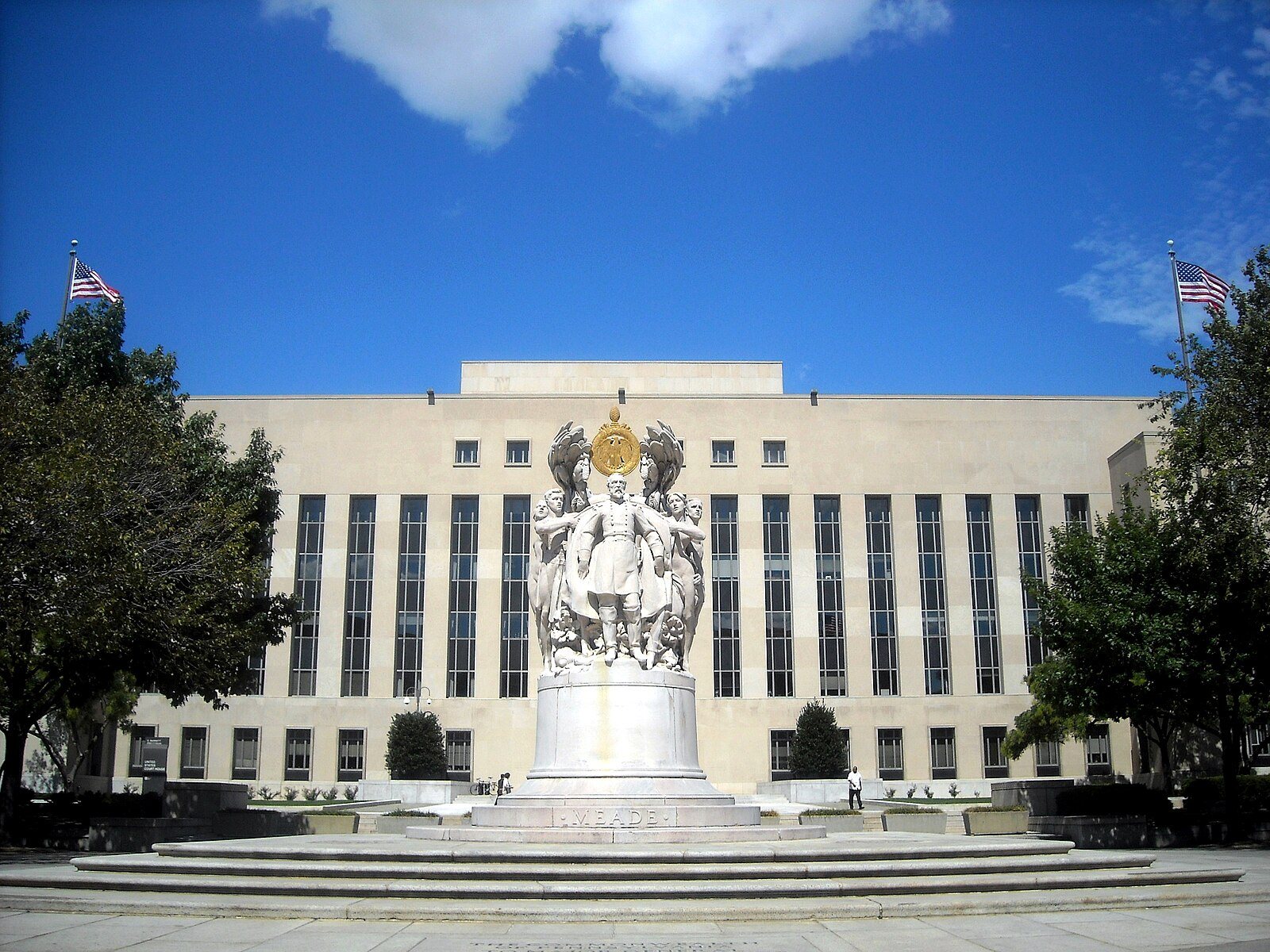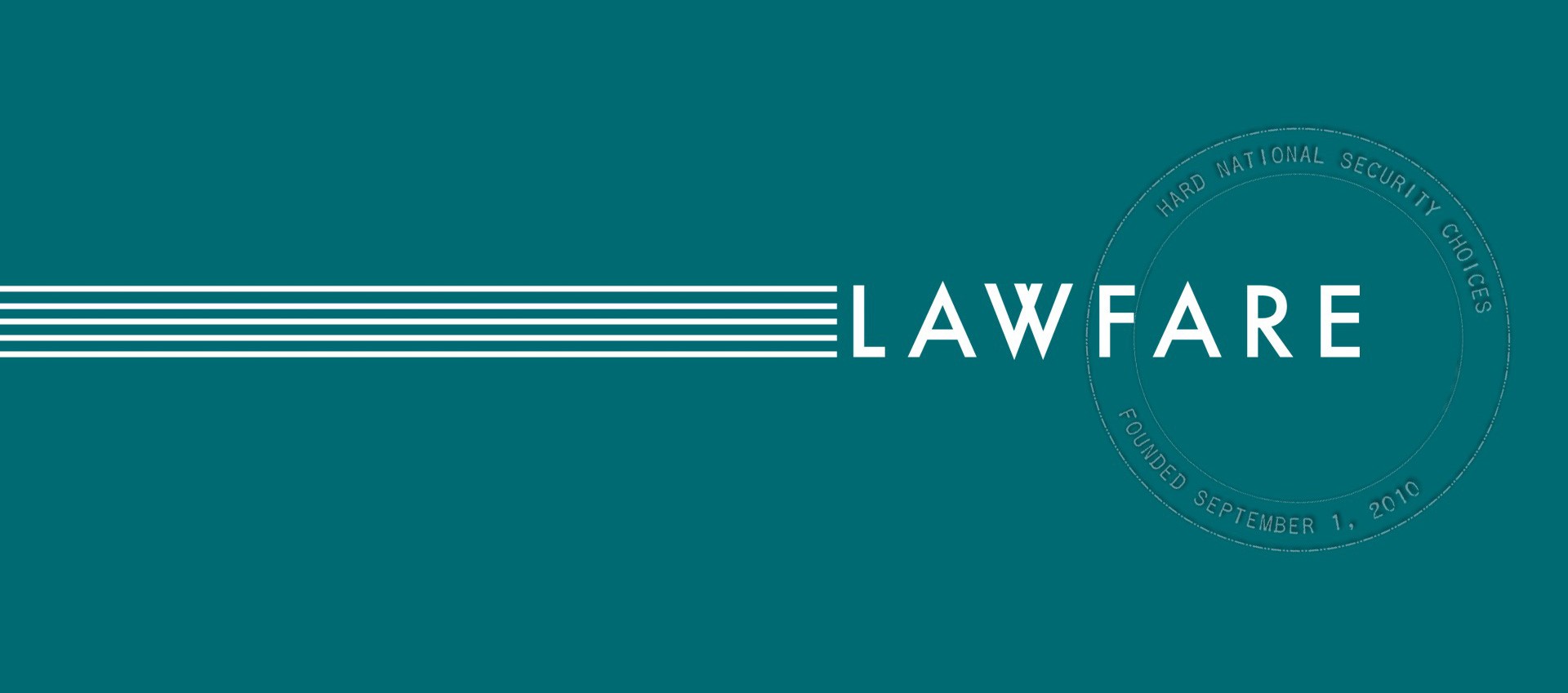Summary: Resting in Part on President Trump, 11 Guantanamo Detainees Petition for Habeas
On Jan.
Published by The Lawfare Institute
in Cooperation With

On Jan. 11, the Center for Constitutional Rights petitioned the federal district court for the District of Columbia for an order granting the writ of habeas corpus on behalf of 11 Guantanamo Bay detainees—Tofiq Nasser Awad al-Bihani, Sharqawi al-Hajj, Sanad al-Kazimi, Suhail Sharabi, Said Nashir, Abdul Rabbani, Ahmed Rabbani, Abdu Latif Nasser, Abdul Razak, Abdul Malik, and Abu Zubaydah—all of whom “have all been detained at Guantánamo without charge or trial, many of them for nearly 15 years or more.” This post summarizes their motion.
Background
The motion begins by recapping the history of the Guantanamo Bay detention center, highlighting the Supreme Court’s rulings barring unchecked detention in Rasul v. Bush (ruling that U.S. courts have jurisdiction to hear detainees’ habeas petitions), Hamdi v. Rumsfeld (in which a plurality held that detention was subject to due process concerns, including notice, counsel, and an opportunity to be heard), and Boumediene v. Bush (adjudging that detainees’ habeas rights cannot be legislatively abridged and that such rights must include a “meaningful opportunity” for one to challenge his detention).
Next, plaintiffs turn to Bush and Obama administration efforts to close Guantanamo. As the administrations worked to achieve this end, however, the motion concludes that post-Boumediene D.C. Circuit “decisions ... granted the government expansive detention authority at Guantánamo.” Forty-one detainees remain today, including five who have already been cleared for release.
The motion proceeds to detail the impact of indefinite detention on the 11 petitioners. To demonstrate the “severe degenerative physical and psychological effects” of “endur[ing] perpetual uncertainty about their fate, including whether they will ever be released,” the motion cites medical experts to support the proposition that such detention is “a recognized form of psychological torture,” as well as evidence of hunger strike and prescriptions for anti-anxiety medications, compounded by nature’s “toll taken by the passage of time.”
As for the final piece of the contextual puzzle, the CCR’s motion points out “President Trump’s [r]efusal to [r]elease [p]etitioners [d]uring [h]is [p]residency.” Specifically, the motion collects many of President Trump’s statements—including his “pledge[] to keep Guantánamo open and ‘load it up with some bad dudes,’ and [statement that] he would ‘absolutely authorize’ torture techniques like waterboarding against terrorist suspects, ‘who deserve it anyway’”; his apparent belief that Americans ought to be tried in military commissions in Guantanamo Bay; his tweet that “there should be no further releases from Guantanamo”; and his defense of detention through his tacit endorsement of President Franklin D. Roosevelt’s Japanese internment—to “ensure[] that the remaining detainee population, regardless of conduct, circumstance or status, will remain imprisoned at Guantánamo for at least four to eight more years.” The motion then connects this stance with Trump’s “regularly expressed, undifferentiated suspicion of, and antipathy toward, Muslims,” substantiated by listing another round of tweets, statements, and interviews, to demand “judicial scrutiny.”
The Argument
The petitioners’ motion focuses around three arguments: that their continued detention violates due process; that their continued detention violates the 2001 authorization for the use of military force (AUMF); and that the court should grant their petition for a writ of habeas corpus.
1. Petitioners’ detention violates due process.
Petitioners begin by citing Boumediene—along with Justice Anthony Kennedy’s concurrence in U.S. v. Verdugo-Urquidez (itself citing Justice John Marshall Harlan’s concurrence in Reid v. Covert) and his concurrence in Rasul—for the proposition that Guantanamo detainees are entitled to “at least some measure of the Due Process Clause” in light of Guantanamo’s practical realities, namely that it is “[i]n every practical sense ... within the constant jurisdiction of the United States.”
The motion then addresses D.C. Circuit precedent, first seeking to distinguish Kiyemba v. Obama (Kiyemba I), another Guantanamo habeas case in which the court rejected a petition by Uighur detainees for their release into the United States. The motion attempts to circumvent Kiyemba by arguing that it applied only to one’s “entry and release into the United States of non-citizens without property or presence in the country.” The motion cites the majority and two concurrences of a subsequent D.C. Circuit en banc decision, Al Bahlul v. United States, to support this. “Accordingly,” the subsection concludes, “whatever the case may be with respect to due process rights to enter the United States for release addressed in the Kiyemba cases, it is plain that some measure of due process extends to executive actions undertaken in Guantánamo.” Having established that they are entitled to due process rights, the petitioners contend that their detention violates said rights in three ways.
First, quoting Supreme Court precedent, the petitioners assert that the “Due Process Clause ‘contains a substantive component that bars certain arbitrary, wrongful government actions, regardless of the fairness of the procedures used to implement them.’” After having been held for 15 years, petitioners believe that the new administration’s politics are the only thing barring their release. Such “a threat [demands] judicial intervention.” And because “the Supreme Court has instructed that substantive due process places limits on the duration of executive detention,” “[t]he court must reconcile any detention authority with the substantive limitations on due process and recognize such authority is limited.” Ultimately, the petitioners conclude this argument by stating: “Because perpetual detention, especially if disconnected to any legitimate purpose or tailored national security interest, is arbitrary, the guarantees of due process forbid it.”
Second, the petitioners argue that due process does not comport with the use of a preponderance of the evidence standard in their prior habeas cases: Citing a 1985 Supreme Court opinion, they contend that their “detention can no longer be based upon ‘no higher degree of proof than applies in a negligence case.’” Rather, petitioners cite multiple cases to claim that “[i]n evaluating the constitutionality of prolonged detention schemes, the Supreme Court has consistently required no less than clear and convincing evidence.” Under this heightened standard, petitioners argue, the proof against them simply no longer carries that burden.
Relatedly, the petitioners argue that courts should not analyze these questions “based on a detention standard focused solely on past conduct or association, rather than one grounded in present conditions: continuing detention must be connected to its ostensible purpose.” And given insufficient evidence of past conduct and current threat, petitioners hold that “[d]ue process compels robust judicial intervention and the issuance of the writ.”
Finally, the motion homes in on two petitioners that have been cleared for transfer—Naser and al-Bihani—arguing that their continued detention violates substantive due process because it “[c]learly [n]o [l]onger [s]erves [i]ts [o]nly [o]stensible [p]urpose.” Petitioners state that “[t]he Supreme Court has repeatedly emphasized that due process requires that noncriminal detention must be reasonably tied to its ostensible purpose.” The motion reviews the details of each individuals’ detention, arguing that “all of the U.S. military, intelligence and law enforcement agencies with a stake in the detentions at Guantánamo have concluded there is no reason to continue to hold these petitioners.” Given both the applicable legal standards and the facts of their detention, the petitioners claim that Naser’s and al-Bihani’s continued detention cannot be constitutionally permissible.
2. Petitioners’ detention violates the AUMF.
The petitioners’ second argument revolves around the AUMF, which they argue “do[es] not permit indefinite, unreviewable detention of the sort Petitioners now endure.” The AUMF only permits detention in order to prevent “future acts of international terrorism against the United States.” But Trump has “declared … his intention to keep all remaining detainees in Guantanamo.”
The petitioners then call on Hamdi’s reliance on “longstanding law-of-war principles” to contend that these same principles no longer permit petitioners detention. In Hamdi, the Supreme Court stated that while the AUMF “does not use specific language of detention,” detention is permitted if “to prevent a combatant’s return to the battlefield[, which] is a fundamental incident of waging war.” Moreover, the Hamdi court cited the Third Geneva Convention Article 118, which reads: “Prisoners of war shall be released and repatriated without delay after cessation of active hostilities.” Resting on these principles, petitioners make two law-of-war arguments, more fully articulated in Robert Chesney’s Lawfare post relating to this case: First, the conflict with al-Qaeda, with which the detainees are connected, has ended, compelling their release. Second, that membership in a targetable organization is insufficient to merit their detention.
In their final AUMF-related argument, petitions assert: “whatever traditional law-of-war detention authority may have existed at the time of Petitioners’ capture and initial detention has by now unraveled.” This argument rests heavily on Hamdi. In that case, the court foresaw the dangers of an extended non-conventional conflict; as a result, it warned:
If the practical circumstances of a given conflict are entirely unlike those of the conflicts that informed the development of the law of war, [detention authority under the AUMF] may unravel.
Seizing on this cautionary language, petitioners put forward that such a scenario has come to pass. The duration of the conflict—over 16 years, the longest conflict “bar none”—lead petitioners to conclude that “[t]he practical circumstances of today’s conflict bear no resemblance to those that informed the development of the laws of war.” Therefore, the petitioners hold that the court “should conclude that the AUMF does not permit such lifetime detention of a kind without historical or legal precedent.”
III. The court should grant relief without further delay.
Finally, the petitioners look to the purpose of habeas corpus review and Supreme Court precedent regarding indefinite detention to persuade the court. Quoting Boumediene (which itself quotes Hamdi), the motion states that:
The constitutional guarantee of habeas reflected in the Suspension Clause was designed to ‘protect against cyclical abuses of power,’ and ensure that the judiciary can deploy the common law writ to ‘maintain the ‘delicate balance of governance’ that is itself the surest safeguard of liberty.’
These safeguards, the petitioners argue, must be enacted to check what they deem policies “driven by undifferentiated suspicion of Muslims as a group, an entitlement to animus, as well as reflexive opposition to prior executive action. ” They argue that “habeas authorizes courts broadly to correct miscarriages of justice” of any stripe.
***
Benjamin Wittes and Quinta Jurecic have asked in the past what happens when the public—including members of the federal judiciary—do not grant the president the usual presumption of regularity. This petition, and the court’s response, may be the first volley in this debate in the context of habeas relief.





